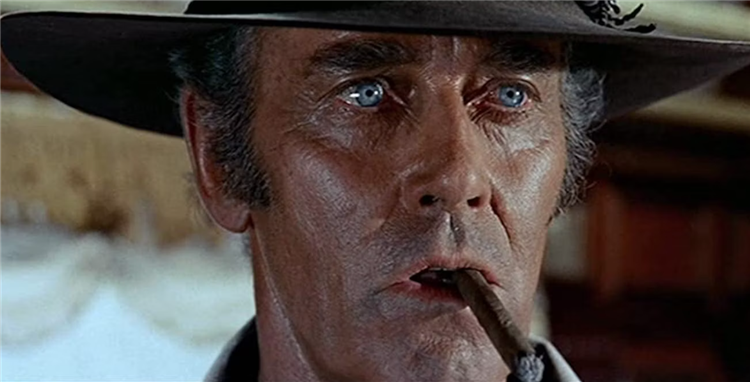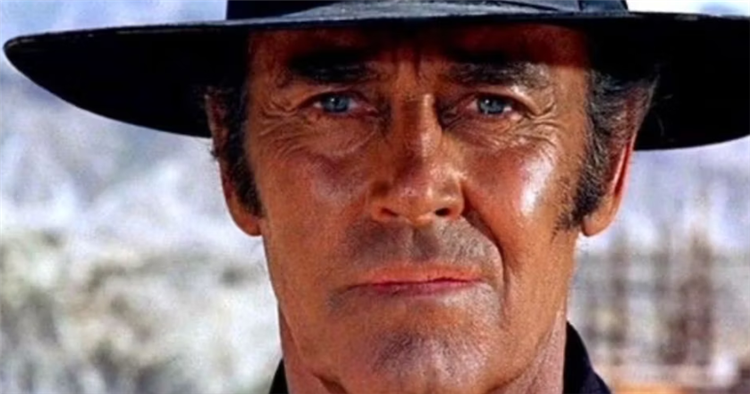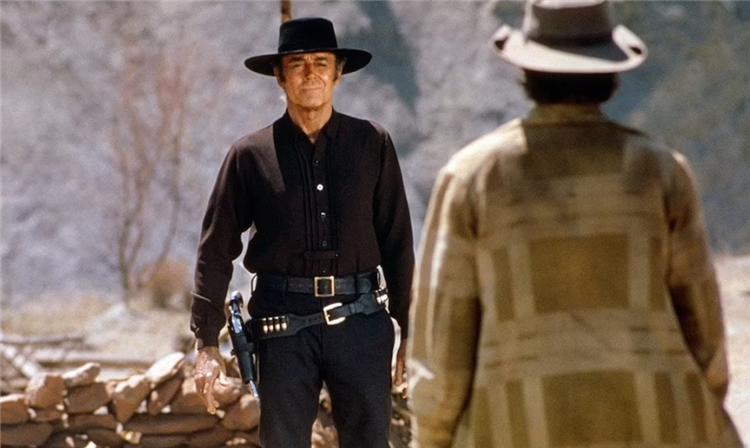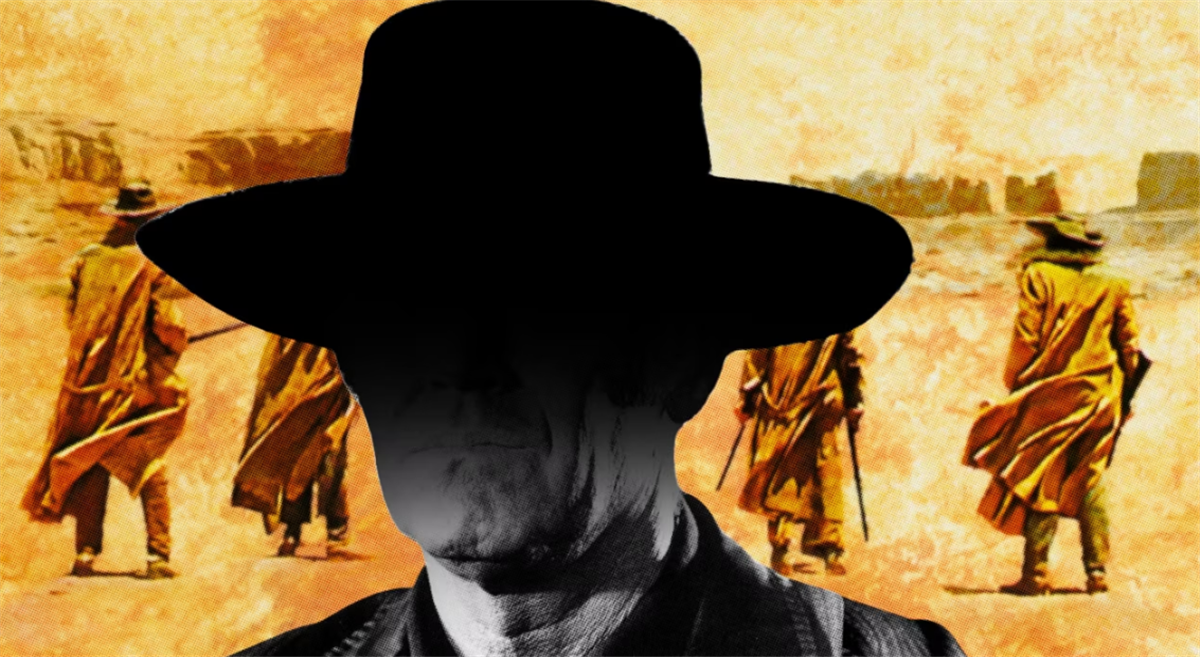Sergio Leone’s 1968 Hollywood epic Once Upon A Time In The West is widely praised as one of the greatest films in the Western genre (if not the greatest). The Italian director’s fourth outing in the genre, following his Clint Eastwood-starring Dollars trilogy, Once Upon A Time is both a love letter and a critique of the Western. It has the staples of tense shootouts, fast-paced action, and sublime imagery of the vast American desert, but at the same time, it manages to deconstruct the iconography through unexpected twists, heightened violence, and a subversive casting decision that manages to reflect a shift in cinema and society all in a single role. Yes, we’re talking about Henry Fonda as Frank.
‘Once Upon A Time in the West’ Sees Henry Fonda Play Against Type
For over three decades leading up to Once Upon A Time In The West, Henry Fonda had been playing the strong, stately American hero on screen. In John Ford’s My Darling Clementine, Fort Apache, and Drums Along The Mohawk, he played stern, stoic, but nevertheless principled Western protagonists. Outside of the Western, he also portrayed Abraham Lincoln and Tom Joad in Ford’s Young Mr. Lincoln and The Grapes Of Wrath, respectively, as well as the sole voice of reasonable dissent in Sidney Lumet’s 12 Angry Men. While John Wayne could sometimes come off as a maverick cowboy and Jimmy Stewart a simplistic everyman, Fonda was a consistent force of assertive, yet benevolent righteousness.
The opportunity to work with Fonda was allegedly one of the biggest draws for Leone to do a fourth Western. According to the film’s behind-the-scenes documentary, An Opera Of Violence, Leone came to Hollywood after his Euopean-shot Dollars films with the hopes of developing what would eventually become Once Upon a Time in America. However, Paramount convinced him to do at least one more Western first, with a large budget and the chance to direct Fonda as irresistible bait.
Leone had no intention of casting Fonda as the protagonist, though. Instead, he gave Fonda the part of Frank, a ruthless, gunslinging assassin, who enters the film by leading a group of bandits in the slaughter of an innocent family. When just the family’s youngest son remains, the aggressors emerge from the sagebrush and the camera slowly wraps around the group’s obvious leader standing in the middle, eventually revealing it to be Fonda — clean-shaven face, baby-blue eyes, and all. He kills the unarmed boy point-blank. This unforgettable introduction likely wowed audiences back in 1968, who had nary seen Fonda play anything but a respectable figure. It let the audience know that this was not a typical Henry Fonda role, and by extension, Once Upon A Time was not going to be a typical American Western.
Leone’s Vision of the West Reflects Changing Times
As the plot continues, it is revealed that Fonda’s Frank carried out the hit on the family on behalf of railroad tycoon Morton (Gabriele Ferzetti), who wanted access to the family’s land. While Frank and his cronies continue to defend Morton with violence throughout the film, family widow Jill McBain (Claudia Cardinale), loner cowboy Harmonica (Charles Bronson), and framed convict Cheyenne (Jason Robards) fight back.
From that central conflict alone, one can see greater signs of subversiveness in Once Upon a Time. Long gone are the days of John Ford’s The Iron Horse and Cecil B. DeMille’s Union Pacific, both early Westerns that celebrated the railroads as success symbols. In Once Upon a Time, westward expansion, at last, comes at the expense of displacement and exploitation on screen. Albeit, the film doesn’t mention the more historically significant displacement of Native Americans and abuse of other minorities, but it at least starts to bend the traditional champions of manifest destiny into antagonists.
Fonda’s Frank is thus an emblem of a larger transformation in the Western genre at the time, one that Leone was determined to comment on through the film. Since cinema’s very beginning, the American Western had been rooted in nationalistic ideologies, serving a mythos of American exceptionalism and rugged individualism. This only became heightened in the Western’s post-World War II golden years, as the genre refined its iconography and resurged in popularity. Movies like Red River, She Wore a Yellow Ribbon, and Shane mythologized history to relish in a timely vision of a triumphant and moral America.
Come the 1960s, however, this vision was shifting. The Vietnam War and the Civil Rights movement spurred mistrust and criticism. Meanwhile, a new generation of filmmakers was also coming onto the scene, ones with new ideas fit for younger audiences. The Western, with its tropes so rehashed and jeopardized at the time, had to adapt to remain relevant. Ford’s The Searchers and The Man Who Shot Liberty Valance arguably set off the trend with their openly self-critical characters and narratives, and the movement continued through the sixties, perhaps coming to an end in 1974 when Mel Brooks unveiled Western tropes as utterly burlesque in Blazing Saddles.
Fonda’s Frank Both Affirms and Deconstructs the Western Legend

Once Upon A Time In The West is right in the thick of this gradual evolution, holding a mirror up to real-world changes with Henry Fonda at the center. In an interview with the actor, he even admitted when he was cast as Frank, he assumed he would need to change his appearance. He showed up on set with brown contact lenses shielding his signature blue eyes, as well as a villainous Vandyke-style beard and mustache. Leone, however, rejected the look, insisting that Fonda remove it all immediately. The director wanted viewers to know that it was Fonda, and not just for his star power.
In addition to killing the family in his opening scene, Frank also murders dozens throughout the film, often doing it with a certain slyness that suggests sadism. The character is brutal, intimidating, and creepy. In one particularly unsettling scene, he even sexually assaults Cardinale’s Jill McBain while holding her captive. These actions would make Frank a chilling character no matter the actor, but the fact that they are carried out by the long-loved Fonda makes him all the harder to endure. It is as if, through Fonda, Leone is intentionally surfacing all the ugliness ingrained in American culture, which had been long suppressed in the mythological Western up until now.
Somewhat ironically, though, Fonda’s portrayal of Frank would end up being one of his best performances, and although the film is rather critical of its own genre, it has since become canonized. After all, one cannot help but sense that Leone is also partially affirming the Western mythology in Once Upon A Time with its cowboy archetypes, sweeping cinematography, and beautiful, fitting soundtrack from composer Ennio Morricone. There is a lingering romanticism in Once Upon a Time in the West, and Fonda, for all of Frank’s villainy, contributes to that nostalgia. Unlike in the traditional Western, however, the nostalgia is unflinching, bitterly, and sincerely reflecting the changing genre at a tumultuous time in American history.
Post Views: 1,104



